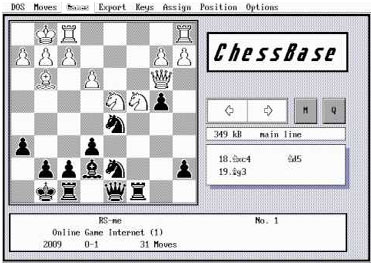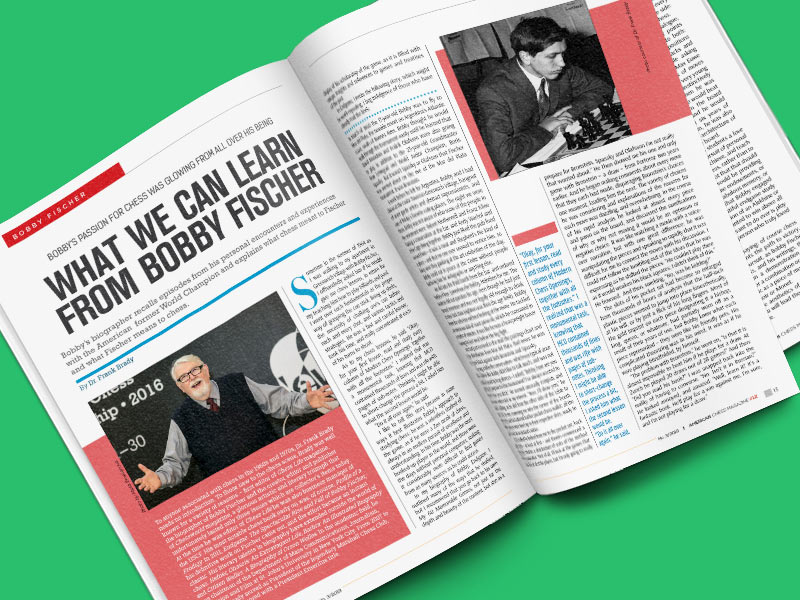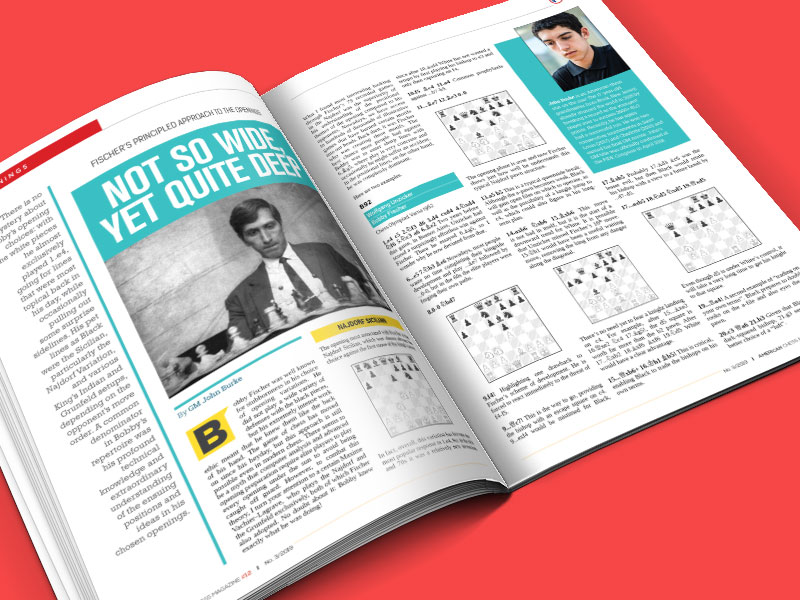


ChessBase 15 - Starter Package
The entry into the chess cosmos. ChessBase 15 program + new Big Database 2019 (7.6 million uncommented games). Plus 3 issues ChessBase Magazine and CB Premium membership for 6 months!
ACM: ChessBase was founded back in 1986. How did you hit upon the idea and what were your main goals at that time?
MW: In 1984/1985 I went to the University of Edinburgh for one year and joined their chess team. My polite hosts let me play top board and that meant playing against opponents much stronger than me. That motivated me to do some serious chess training.
I actually spent more time on chess theory than on theoretical physics in Edinburgh... At that time chess players maintained their opening repertoire with file cards. I was keenly interested in computers and the time seemed ripe to use them for storing chess information. When the first affordable personal computers (“Atari ST”) were available, I started writing a chess database for myself.
How many people were employed at the very beginning and when did you first start to expand?
The first publication of ChessBase was done by two people — my co-founder Frederic Friedel and me. Also, one of our key developers, Mathias Feist, already contributed important elements at that time. Soon the growing success required a bigger commercial structure and
in 1988 we founded the ChessBase GmbH in Hamburg with a real office and several employees.
The editors of Chess Informant Belgrade were very interested in the early stages of ChessBase. They understood that it would inevitably change their business model but also saw the huge benefits for the production of the book. We distributed Chess Informant
as a database product quite successfully. I also wrote some internal tools in those days to help with their editing process. Visiting Belgrade has been fun and I remember sitting one whole weekend completely alone in the offices of Chess Informant and writing code. I quite liked the people from Chess Informant.
After so many years, still at the top! What makes ChessBase remain the main tool for any advanced player?
In the history of ChessBase there have always been excellent competing approaches to chess database software. But somehow those other companies did lose interest at some stage while we kept improving the program and adapting new techniques. For example, the integrated online database, Let’s Check, the cloud databases and the engine cloud are essential integral parts of ChessBase today.
As a software product, ChessBase is now up to version 15. From a present day perspective, which versions you would point to as being the most important maybe even revolutionary and why?
Find the right combination! ChessBase 15 program + new Mega Database 2020 with 8 million games and more than 80,000 master analyses. Plus ChessBase Magazine (DVD + magazine) and CB Premium membership for 1 year!

The step from DOS to Windows with ChessBase 3 [right] was of course interesting. Then ChessBase 6 introduced a new format with multimedia capabilities which heralded a strategic orientation still successful today: Integrate chess analysis with interactive videos. ChessBase 11 introduced a radical new user interface but suffered from instabilities. We then started using crash telemetry which increased the “meantime between failure” from four hours to 1000 hours nowadays. ChessBase 13 introduced cloud databases which I find personally rather useful. Tactical Analysis and Assisted Analysis in ChessBase 14 were also important steps which are heavily used. Finally, the new fast reference search in ChessBase 15 was a really good thing for professional players.
At the moment we work on a two-year life cycle. We need steady improvements but an update needs to have signifcant novelties, so a one-year cycle would be too hasty. We also have a lot of other projects that keep our six-man development team busy.
 CB versions from 12-15
CB versions from 12-15
CB 15 introduced a broad set of new features. As pointed out by Jon Edwards, ACM columnist, it’s really amazing how you managed to create a search for different tactical motifs, under the Manoeuvres tab?
In the first half of 2018 we implemented an old dream of ours, a website completely dedicated to beginners, www.schach.de. A website that starts with explaining how the king moves in chess. At the moment it is only available in German. For this project I found myself inventing dozens of positions to illustrate tactical motifs. The material you find in tactics books was too difficult for our purpose. But, of course it is much better to take positions from real games. So, when the launch of www.schach.de was completed and we started working on ChessBase 15, the first thing to tackle was the tactical motif search to make this task easier in the future.
What about CB on Mac to the choice of proper platform? What are the obstacles in this field chess software. Can you explain the fundamental compared to the Windows difference between environment?
We are rather conservative and cautious as a company and have always kept our costs under control. Maybe sometimes we are too cautious. On one hand this means that the company has been profitable for many, many years. On the other hand, our development team is too small to support many different native platforms. This is a pity but we also have to keep improving our different web projects. However, many people, including myself, use Macs with dual boot features to run ChessBase in a Windows environment.
How long would you say it should take someone to master the use of CB at expert level? Is there any program to help users advance in understanding CB, and maybe further share their knowledge with others in the chess community?
I think the essential features of ChessBase for openings and player preparation
are really not difficult to understand. The complexity of the program might arise from features that have been replaced by newer functionality but that are still heavily used and thus cannot be scrapped. Opening Keys is a good example.
The first thing you need to learn is annotating and saving your games. Secondly, you have to understand the reference search and the live book for opening research. Thirdly, the Players Index for preparation against specific opponents. This covers most use cases for the normal club player.
The "Mega" is the database every serious chessplayer needs. The database contains 7.6 million games from 1500 to 2018, in highest quality standard, full of top level analyses and completely classified.
Mega Database is a huge project in itself. If a game is not properly recorded there, how and where can a player report the corrections to a game?
There is indeed a complex editing process behind Mega Database involving several people. It is quite an effort and in the last years we have also cleaned up the historical tournaments a lot. Unfortunately we don’t have a web interface to report corrections — that would be good. Writing to info@chessbase.com is the second best way.
Very often chess players, and especially chess parents, get confused when it comes ChessBase and Fritz software? Or, why should someone choose Fritz over Komodo and vice versa?
I understand this confusion. Fritz is meant for the broad market and contains a lot of very simple training features like the “Easy Play Mode”. But we have not been able
to keep this clear separation. Fritz for example also offers the Calculation Training in
the Easy Play mode, which is a tough training feature for players of 1800 and stronger. Also, some of the analysis functions in Fritz are very high level. In the end, you really need both programs to really cover everything. Fritz and Komodo are identical from the user interface.
Fritz 16 - He just wants to play!
Fritz 16 is looking forward to playing with you, and you're certain to have a great deal of fun with him too. Tense games and even well-fought victories await you with "Easy play" and "Assisted analysis" modes.
Speaking of online chess playing platforms, the inevitable question is dealing with cheating online! What has ChessBase done to keep the playing zone safe from cheating?
We wrote software which checks thousands of games every day. There is a lot you can do with statistics and weighted engine comparison. You can never prove cheating in a single game. But if you have a dozen games of a suspicious player, this is not a big problem.
Do you think that an absolutely safe playing platform may exist someday?
I think it is really problematic to do online tournaments with prize money. The incentive
to use very subtle help is too high. For a strong player even a hint like “Look again!” can mean a lot of Elo points. So, we stopped this completely after running a couple of of cial championships with money prizes. However, for casual chess I see no problem at all on Playchess and certainly also on other chess servers. There is always some cheating, but with the high number of daily games, the probability to encounter a dubious opponent is pretty low. Proper chess is simply too much fun for most players.
Do you innovate mostly on the basis of your own experience or does the feedback coming from users worldwide count even more? Is it important for a chess programmer to be a chess player himself?
I think it is really helpful if you understand the needs of tournament and club players. You can understand it formally if you are not playing yourself, but the best software is the one being used by the programmers themselves in their spare time. At the moment, all of our developers are players with tournament practice.
We wrote openings.chessbase.com and tactics.chessbase.com basically for our own fun and training.
Learn about the new Tactics tools
Over the past years we have witnessed that chess software being relocated from offline (Windows) to online (Web). ChessBase is trendy here too, what is the importance of this trend?
We love developing for the web. It is so elegant in many different ways. Native platforms come and go — the web will stay. At the moment, for us it looks like you cannot earn enough money on the web to support a serious commercial organization. But you attract many people. This is of high value if you have something to sell which they really like.
Which big goal of yours is still to be achieved? Have you been impressed by any good old chess books that you would recommend?
I am still not entirely happy with our natural language annotation feature. We have made a big step with the “Tactical Analysis”, but I would be proud if we could make further progress in this field. I think the most fruitful application of AI in chess is annotating games. We achieved a lot on live.chessbase.com where the automatic annotation immediately points out interesting situations in running master games. But there is still much to be improved.
For me, the best chess book ever is The Chess Struggle in Practice by David Bronstein, which is about the Candidates’ tournament held in Zurich 1953.
How do you see ChessBase in the next 10 years and beyond?
It is very likely that we will shift more and more attention to web services. Making a sound prognosis in a technical field is difficult because so many factors are influenced by sudden innovations. We will try what we always did: Look for ways to apply new technologies to our field.
With the exception of the ChessBase software itself we have changed the emphasis of our business model many times during the last 20 years. I hope that we will keep that flexibility which is essential to stay profitable.
A critical and challenging phase in the next years will be to replace several experienced and seasoned developers who have carried the company from the very beginning. It is not trivial to find good developers who also have a clear vision in which direction our products should go.
A step out to the offline world, what are your impressions on the American Chess Magazine?
I like ACM very much because it is a fresh and, in many ways, new approach to chess magazines. There is so much depth in the tournament reports. Personally, I also admire the design, it has a modern style and cool young colors.
You'll find the complete interview in American Chess Magazine #12!

The new American Chess Magazine #12 pays due tribute to the legacy of Bobby Fischer due to the 50th anniversary of the publication of My 60 Memorable Games!
In the fall of 1972, Bobby Fischer, newly crowned world chess champion, was the most celebrated person on earth. No American chess player before or since has achieved such a degree of fame and notoriety. Throughout the summer of 1972, Fischer’s pre-match hysterics, antics, and demands made headlines all over the world. When he took the crown from the Soviet chess machine, the mass publicity that ensued prompted new chess players to sprout up all over the globe. Everywhere you looked, it was chess, chess, and more chess. New members flooded the United States Chess Federation. The Fischer era had begun.
Or had it? Shortly after the match, Bobby Fischer, to the shock and dismay of chess fans, disappeared from public view for almost twenty years.

In this issue, Fischer’s biographer Dr. Frank Brady recalls episodes from his personal encounters and experiences with the American former World Champion and explains what chess meant to Fischer and what Fischer means to chess.
Following Dr. Brady’s article, readers are invited to look at two authentic testimonials by Lou Hays (USA) and Vladan Dinic (Serbia), who provide first-hand accounts of how Fischer was lured back to chess — and, we might say, also the world at large. After twenty years in isolation, in 1992 Bobby re-emerged from obscurity to play “the Revenge Match of the 20th century” against Spassky in Yugoslavia. Even for readers who are already very knowledgeable about Fischer, these two articles, from both sides of the pond, are warmly recommended as they reveal many little-known facts about his life.
In an exclusive interview for ACM, the legendary Serbian GM Borislav Ivkov — a live witness of the “Fischer era”, shares his personal memories of Bobby Fischer, putting the record straight on what Bobby really said and whether he really invented random chess.
 Fischer’s chess legacy is then examined by our regular contributors: GM John Burke presents Bobby’s favorite openings, IM Boroljub Zlatanovic casts light on Fischer’s strategic decisions and GM Alex Fishbein dissects Fischer’s endgame mastery, boldly concluding that “modern chess begins with the eleventh world champion, and that applies to the endgame as much as to anything else.”
Fischer’s chess legacy is then examined by our regular contributors: GM John Burke presents Bobby’s favorite openings, IM Boroljub Zlatanovic casts light on Fischer’s strategic decisions and GM Alex Fishbein dissects Fischer’s endgame mastery, boldly concluding that “modern chess begins with the eleventh world champion, and that applies to the endgame as much as to anything else.”
GM Joel Benjamin entered his first chess tournament in December of 1972 and fondly remembers the “Fischer Boom” and the impact it had on American chess, which in turn resulted in the rise of a whole new generation of later-to-be grandmasters.
Pete Tamburro and Carsten Hansen give their respective views on the best books written on Fischer, and Pete also challenges readers to find the winning moves from a selection of Bobby’s tactical brilliancies.
American Chess Magazine: Issue #12
Text: ACM